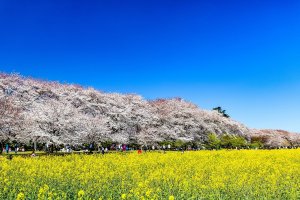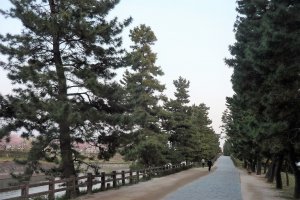Overview
Nikko Kaido, the historic route from Tokyo’s Nihonbashi Bridge to the elaborate Toshogu Shrine at Nikko stretches over 100 kilometers. The route had 21 shukuba, post stations where travelers could rest. These Edo era rows of inns and stables grew into cities along the route.
Of the 21 Nikko Kaido post stations, six are located in modern Saitama Prefecture. These six places retain vestiges of the heyday of slow travel before the advent of trains and roadways. The cities they grew into are charming in their own right, too.
Soka Shuku, Soka City
Mention Soka City to Japanese people and they'll recall Soka sembei, the popular rice cracker produced there. The town has some temples and shrines for a stroll to work up your appetite for a sembei snack.

On the riverside, Soka Matsubara Watchtower is a good place to start as it marks the beginning of Soka Matsubara Promenade. Next to it is Sokajuku Basho-an, the visitor information center where you can pick up maps. The avenue of pine trees follows the old Nikko Kaido, the route that haiku poet Basho chronicled in Oku no Hosomichi, The Narrow Road to the Deep North. Follow in the footsteps of this celebrated poet and pilgrims as you walk the 1.6-kilometer riverside route. A visit to
Koshigaya Juku, Koshigaya City
While modern Koshigaya City is probably best known for Koshigaya Laketown shopping complex, it has heritage remaining from its time as a post town and even stood in as the shogun’s headquarters. Hizaizu Shrine with its wisteria trellises and Tengakuji temple in the heart of the city were favorite spots of shoguns.
Two heritage houses are preserved as museums, the 18th century Former Nakamura Residence on the lakeside and Taisho era Omanocho Nakamura Residence.
Beyond the Nikko Kaido, Koshigaya City has some culture and natural beauty. One place is Hanata-en, a modern interpretation of a Japanese strolling garden with a tea house. On the grounds is a Noh theater where community members perform. Another lovely spot in late winter and early spring is Koshigaya Bairin Park, a plum grove on the edge of the imperial duck hunting grounds.
Kasukabe Juku, Kasukabe City
When you pass through Kasukabe Station in Kasukabe City, you’ll see the celebrated animation character Crayon Shinchan emblazoned on platform signs and even bus livery. But the city also has a lot of attractions that Edo era travelers encountered. On the east side of the station are a number of kura storehouses and merchants' homes that give you an impression of the post-town atmosphere.
Within walking distance is Hachiman Shrine modeled after Tsurugaoka Hachimangu in Kamakura. At Fujino-Ushijima Station is Tokaen, the garden of now 1000-year-old wisteria vines to marvel at in late April.
On Fujidori Street, drop by Kajouen for sweets and Odutsumien for locally grown tea. Further on, stop for lunch at Tomoeya for old-fashioned soba.
Sugito Juku, Sugito Town
Wedged between Kasukabe City and the Edo River is Sugito Town, a former post town that has a few treasures. Just off the Nikko Kaido, visitors can see the Kosatsu-ba, a reproduction of the old notice board on which the shogun posted rules and orders. Along the Nikko Kaido in the town, you can see heritage shophouses and various temples and shrines that pilgrims stopped at.

The town celebrates in August with a lantern festival on the Furutone River, described as the Milky Way Fallen to Earth. Any time of year, drop by for a soak in Uta no Yu, a spacious onsen with indoor and outdoor baths surrounded by rice paddies.
Satte Juku, Satte City
Pilgrims passing through Satte Juku in modern Satte City enjoyed the scenic Gongendo Park avenue of cherry trees in springtime. The cherry trees now number 1000 and contrast with yellow nanohana blossoms. The park has spectacular flowers to enjoy in all seasons - narcissus in late winter, hydrangea in June, and millions of spider lilies in September.
Kurihashi Juku, Kuki City
Kurihashi Juku in what is now Kuki City was the last post town before the Tone River crossing into Ibaraki Prefecture. Washinomiya Shrine has always been a big attraction, first because it is the oldest one in the Kanto region, and second because it is the setting of the popular animation series Lucky Star.
The city attracts festival-goers for the Kuki Lantern Festival in July with processions of highly decorated effigies of historical figures by day and thousands of lanterns by night.





























You can tell which one is my favorite - Koshigaya.